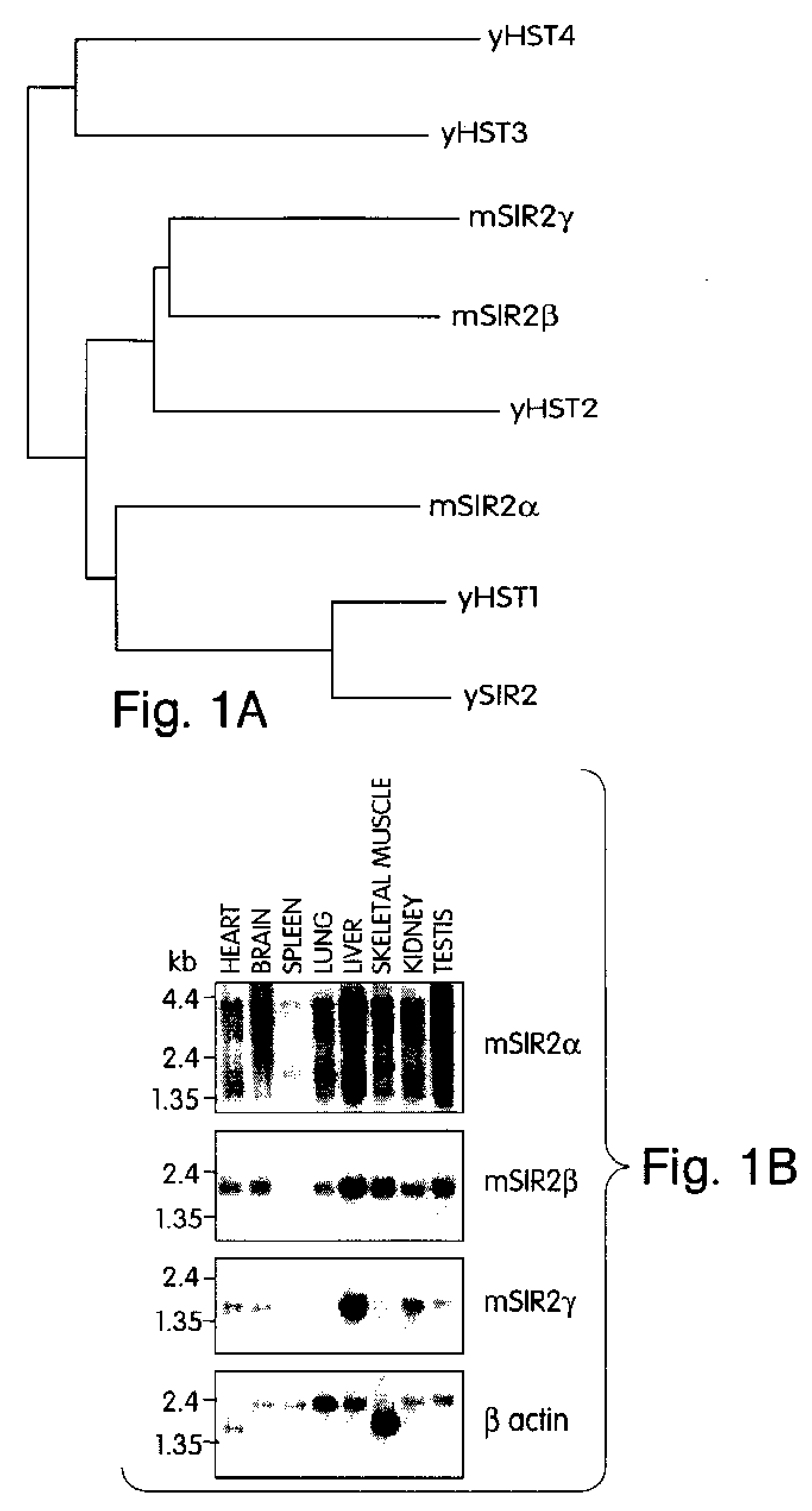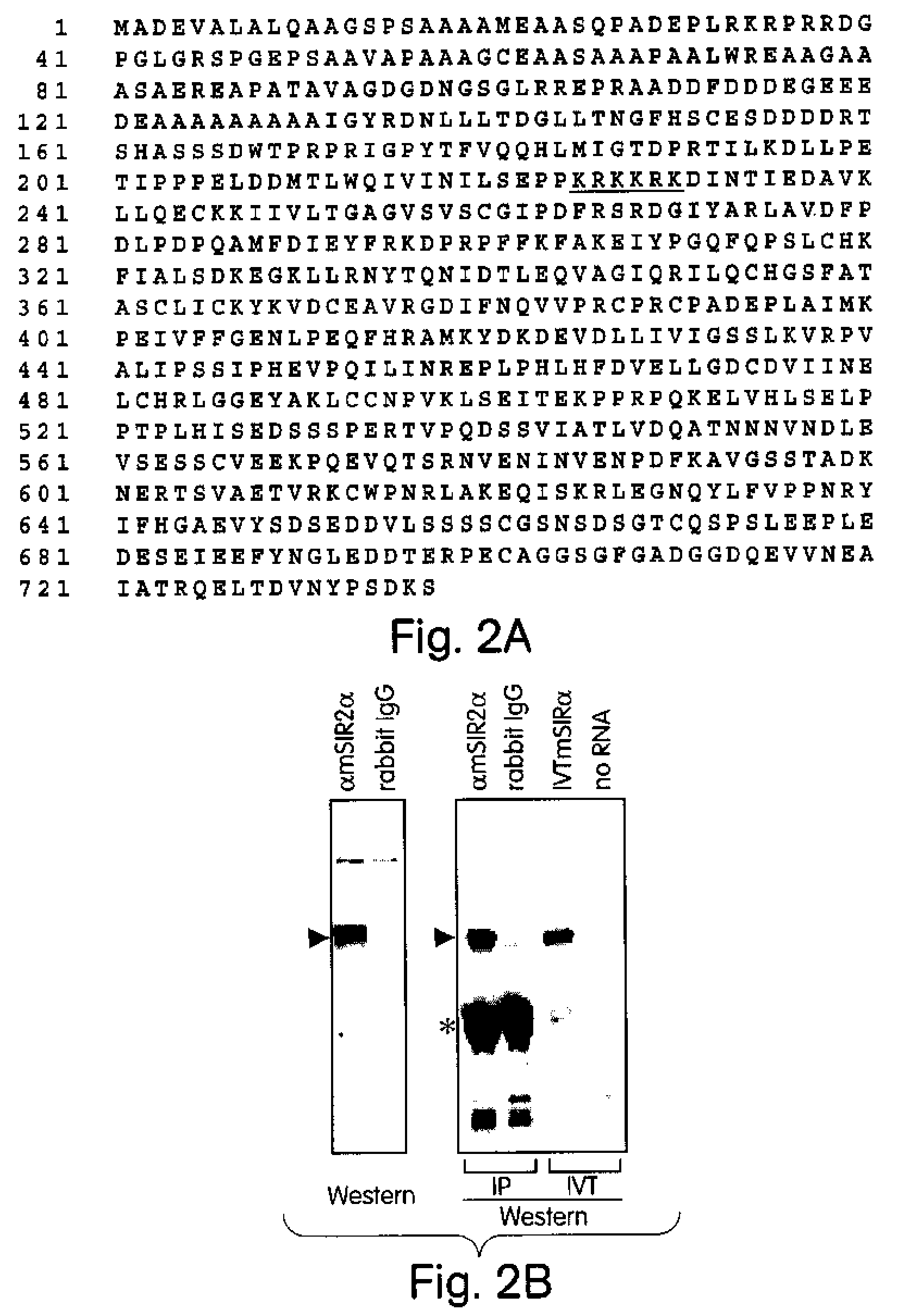Methods for identifying agents which alter histone protein acetylation, decrease aging, increase lifespan
- Summary
- Abstract
- Description
- Claims
- Application Information
AI Technical Summary
Benefits of technology
Problems solved by technology
Method used
Image
Examples
Embodiment Construction
Background of Invention
[0001] The invention was supported, in whole or in part, by grant AG 11119 from the National Institutes of Aging. The Government has certain rights in the invention.
[0002] Aging involves progressive and irreversible loss of cellular processes and physiological functions that ultimately increase the likelihood of death. Molecular correlates of aging, including an increase in chromosomal structural abnormalities, the frequency of single-strand DNA breaks, a decline in DNA methylation, and a loss of DNA telomeric sequences, have been described in a range of eukaryotic organisms from mammals, such as humans, to unicellular organisms, such as yeast.
[0003] Although several mechanisms have been postulated as mediators of aging (e.g., somatic mutation theory, error catastrophe theory, intrinsic DNA rearrangement theory), none have led to interventions or therapies to slow aging and increase life span. In humans, declining health in aging individuals has a significant ...
PUM
| Property | Measurement | Unit |
|---|---|---|
| Length | aaaaa | aaaaa |
| Composition | aaaaa | aaaaa |
| Pharmaceutically acceptable | aaaaa | aaaaa |
Abstract
Description
Claims
Application Information
 Login to View More
Login to View More - R&D
- Intellectual Property
- Life Sciences
- Materials
- Tech Scout
- Unparalleled Data Quality
- Higher Quality Content
- 60% Fewer Hallucinations
Browse by: Latest US Patents, China's latest patents, Technical Efficacy Thesaurus, Application Domain, Technology Topic, Popular Technical Reports.
© 2025 PatSnap. All rights reserved.Legal|Privacy policy|Modern Slavery Act Transparency Statement|Sitemap|About US| Contact US: help@patsnap.com



